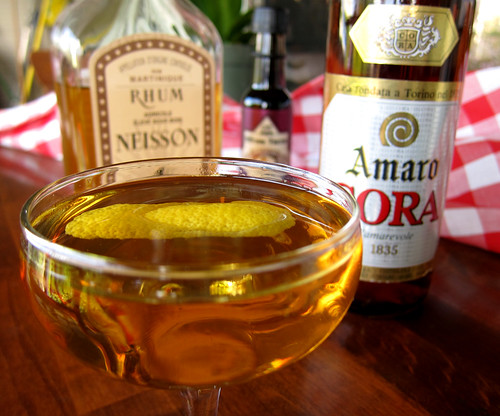Sodatender or Barjerk: Lost Secrets Revealed?
[NOTE: This is the first of several preview posts I’ll be writing to highlight upcoming seminars at the 2011 Tales of the Cocktail in New Orleans, taking place July 20-24. This is a crosspost from the original post at Talesblog.com.]
Last year I had the best Ramos Gin Fizz I’d ever had in my life.
As a New Orleanian I’ve had a lot of ’em, good and bad. (The nadir was the one at an unnamed restaurant which should have known better; it had so much orange flower water in it that it tasted like hand soap.) I’m thrilled to see the drink being made very well around the country thanks to the craft cocktail renaissance, but my favorite place to get them is in New Orleans. It’s part of what makes the city feel like home.
This particularly stunning Fizz was made at Bar UnCommon in the Père Marquette Hotel, and was made by Chris McMillian, unsurprisingly. Chris is a consummate bartender — methodical and deliberate, making perfect drinks, and entertaining you with tales and history as he does it. This one, though, this one …
Chris had been trying some new things out on me, and we’d had some classics, and even though it was late at night and I do tend to enjoy this particular drink earlier in the day, I was just in the mood. “Could you make me a Ramos?” I asked.
“Coming right up!”
I continued chatting with my friends, not really watching what the bartender was doing, oddly enough, as bartender-watching is something I frequently do. I noticed that he wasn’t shaking the egg white for nearly as long as I’ve seen other bartenders do it, though, and I began to try to pay more attention. The conversation also demanded my attention, so I wasn’t able to closely follow what Chris was doing, but I recall there being a bit of soda already in the glass as he strained the drink, agitating it gently with a barspoon as the glass filled.
He placed the drink in front of me, and I took a sip of what was the most spectacular Ramos Gin Fizz I had ever tasted.
It was perfect. Not only the balance of flavor, but the texture … holy hell, the texture was magnificent. Silky and smooth and completely emulsified, almost like very soft peak meringue, but not just on top. This emulsified texture remained consistent all the way to the bottom of the drink, with no separation at all, until I slurped the very last drops of it through the straw. Even the best Ramos Fizzes I’ve had separated after a bit. Not this one.
I had to gush. “Chris, this is amazing! I caught a few glimpses of you making it — how’d you get it like this?”
Chris replied that after all these years making them in the usual way, he had recently completely changed his technique after reading Darcy O’Neil‘s book, Fix the Pumps. “Read it if you haven’t,” he said with a twinkle in his eye, “and you’ll see how I did it.”
Intrigued yet?
Darcy is a bartender and trained chemist from Ontario, Canada whose aforementioned self-published book is a history of the American soda fountain, its rise and fall, and the myriad secrets of the sodajerk — many of which were nearly lost to history (when’s the last time you saw a full-fledged, old-fashioned soda fountain?) and nearly all of which are incredibly useful to the modern bartender.
Along with the esteemed David Wondrich Darcy will be presenting a seminar called “Sodatender or Barjerk?” in which they’ll review this history, techniques of the sodajerk that the bartender can use (see above), and how the techniques of the bartender — many of whom were out of work 90 years ago due to Prohibition — came into play at the soda fountain.
Want to learn some fascinating history and some great techniques to make your drinks even more amazing? If so, this seminar is not to be missed!






